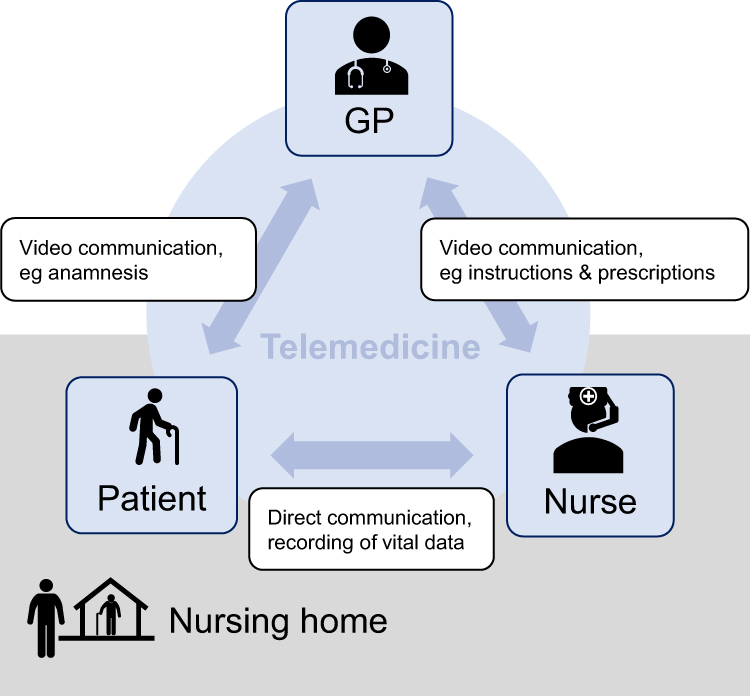In this article we talk of how practical and supportive telemedicine in nursing homes is, and some crucial points of telemedicine software adoption.
With life expectancy increasing, we face our society aging fast. People over 80 are foreseen to be 202 million in 2030 and even two times more in 20 years, in 2050. As for the global telehealth market, it will be worth almost 192 billion USD in three years. The numbers are impressive and pretty much convincing as to the telemedicine attention sphere and motivating for today’s investments.
It was already obvious during 2020 isolation that the most fragile people are those over 65 years old, they are more likely to suffer from Coronavirus complications, and need more attentive care due to their already existing chronic diseases.
In the USA, for instance, around 85% of nursing homes patients are above 65. They are endangered and therefore require extreme caution in following pandemic rules like staying away from unnecessary contacts. Yet, the isolation does not mean they are deprived from constant monitoring and good care.
Which telemedicine tools can be great for adoption in nursing homes?
The extensive telemedicine practice creates a patient-first attitude to the whole healthcare workflow, and offers much better medical services while eliminating location and other limitations that may be often vital for nursing homes. The telemedicine solutions like online video conferencing, point-of-care software, and remote patient monitoring are great for using in nursing homes. In our blog you can find a lot of information on them and more.
Online video conferencing enables real time patient-doctor remote communication. This way practitioners like therapists, nurses, physicians, psychologists, etc can confidently take treatment decisions, advise and instruct, fix medication scheduling treatment for aged patients, and avoid personal visits.
The increase of point-of-care solutions promises better outcomes and low costs through easier access to and use of diagnostic and monitoring devices. Many POC technologies are going to be adopted outside of traditional healthcare institutions. Though it will take from 5 to 10 years for consumer markets to blossom in their full power, early investment is a great and rewarding choice.
The need to confirm health economics claims for POC solutions is evident. The developers of point-of-care medical technology are becoming more and more confident that the industry will have to justify the often detached claims of cost reduction potential moved by POC solutions. The main part of these claims is driven by the idea that the savings will be fulfilled over a longer period of time by decreasing or fully ignoring clinical visits and redundant testing schemes, enabling earlier diagnostics and patient-centric plans, and encouraging society, in general, to monitor their health status with responsibility and dedication taking advantage of preventive care before getting sick.
Even if these presumptions seem to be sound and logical, none of the health economic studies can provide anything that would test the hypotheses one by one and validate the economic impact. The payer systems worldwide, including the health insurance industry, have already begun to force developers and supporters of POC devices to prove and demonstrate their long-term cost savings claims, as they get more prudent of the economic influence of expanded testing at usually higher fees than usual procedures that can happen as a result of the extensive implementation of POC devices.
For that reason, point-of-care related companies should regard pooling resources to finance the essential health economic studies. The entire industry’s tomorrow may rely on their power to persuade payers to favor POC monitoring and diagnostics over more common means.
DevOps as a ServiceDevOps on autopilot
CTO as a ServiceStregthen your team
Software testingEnsure software quality
Discovery phasePlan your priduct from a to z
Cloud ServicesGeneral information about healthcare cloud services
Google Cloud ServicesEnsuring confidentiality when working with medical systems
AWS Cloud ServicesServices specially designed for the healthcare industry
Microsoft Cloud ServicesPlatform processing, analyzing and sharing medical data



